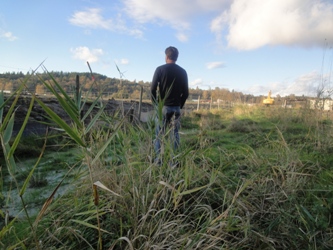
As an ESC instructor as well as a private consultant, the one thing I always tell students that are interested in getting into erosion and sediment control (ESC) design, is always go and visit your work site before you start putting pen to paper (or opening up AutoCAD), and walk around thinking about the different aspects of your site.
Always, always, always, know your soils on site - if you don't understand your soils, you really shouldn't be putting a set of ESC plans together - it's that simple. Know your soils, walk your site, and at times stop and think about what you are going to design and why.
I get the latest site plan, and then meet up with the developer at the to-be work site, and walk it with them first. By looking at the raw site and talking about the proposed development with the developer or contractor, it is easier to get an idea of what areas you'll have to play with in your ESC design, as well as potentially problematic areas that will require extra attention.
After I walk the site a few times, I like to imagine what it may look like on a rainy day: where the excavators are moving around; the steepness of the slopes on site and where they level out; how much water can be expected to runoff during different rain events; environmental features such as watercourses, wetlands, or vegetation that need to be protected; as well as how I plan to prevent bad site conditions while keeping in mind the costs of the BMPs I plan to recommend to please the developer or contractor.
Experience of course plays a big role in understanding which BMPs will work in which circumstance and which will not - but more often than not, most sites can be managed well with minimal BMPs if you are able to create a good working relationship with the contractor and their work practices.
There are sites where I tell the contractor that if they follow my plan as designed, they won't require silt fence, a sediment pond, or other costly BMPs to manage their sediment control. If enough vegetated area can be retained, then water from site can often be pumped into the vegetated areas to infiltrate. Sometimes it can be that simple.
Again, I believe that the site visit walk, and stop and think methodology to design works the best when putting erosion and sediment control designs together. And remember: always know your soils and what that will mean for your work site - otherwise, let someone else do the ESC design.